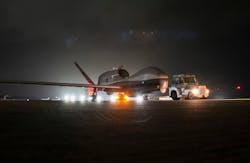Navy eyes enabling technologies for unmanned vehicles that can network systems efficiently and economically
WASHINGTON – The U.S. Navy is crafting common unmanned system enabling technologies like autonomy, network standards, and control stations outside of program offices to enable program managers to focus on range, stealth, or other features that make a particular unmanned vehicle unique. USNI News reports. Continue reading original article
The Military & Aerospace Electronics take:
25 Sept. 2020 -- Much like the recent frigate competition involved substantial of government-furnished equipment -- the combat system, the radar, data links, weapons, sonars, and electronic warfare (EW) -- future unmanned systems are likely to have government-furnished vehicle control systems, data management systems, and autonomy packages.
The Navy is creating an unmanned campaign to buy unmanned systems that can be networked with the manned fleet to create naval warfighting capability and to ensure they’re bought, maintained to manage resources instead of creating redundancies that waste money and effort.
This campaign comes as the Navy is working with the Office of the Secretary of Defense to revamp its vision of the future fleet, in a study effort called the Future Naval Force Study (FNFS), which also will consider how unmanned systems will contribute to the future air, surface, and undersea fleet design.
Related: Enabling technologies for airborne electronic warfare
Related: Networking vehicles on the future battlefield
John Keller, chief editor
Military & Aerospace Electronics

